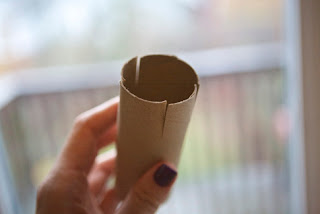
Are you getting an itchy green thumb? It's hard this time of year. Winter drags on and on. You feel like it's been years since your skin has touched the cool, green grass. The sun is a rare treat, peeking out every few days.
Remember these? They grow from a plant and taste different from something very similar that we find in our grocer's produce section.
It's time. It's so time.
No, really. We can get started! It's six weeks before the planting season here in zone 4. Time to start indoor seeds. I've never done it before and I plan to give it a shot this year.
 |
| Close-up of tomato seeds |
It's important to consider your region. I'm looking at "cooler climate tomatoes," many of which are from Russia. They're earlier maturing and have shorter growing seasons.
For some reason, tomatoes in my garden tend to be very susceptible to blight, specifically a fungus-like pathogen. So, I look out for the term "disease resistant."
With all the options offered, these will be my two most important while looking for tomato seeds.
 |
| Early Tomato Blight |
You'll notice the words "determinate" or "indeterminate." This refers to how the plant grows. Indeterminates are vining tomatoes which need caging and support. Determinate varieties are bush types that generally don't grow taller than four feet. It helps to know this if you don't have a large garden plot.
If you plan to try to save your seeds for next year, you may also keep an eye out for the term "open pollination."
Pollen is released between 10am-4pm on dry, sunny days (WSU extension). The wind provides a gentle vibration. Summers tend to be humid where I live. This year I'm going to try self-pollinating my tomatoes using a small paintbrush (maybe others plants, as well).
I've been doing this with my zucchini for years, when production isn't it's usual ample standard. But I've never considered doing this for my other plants. Duh, I guess.
Something else to keep in mind when choosing your seeds is, for what purposes will you be using them? My main reason is preserving, so I need a canning tomato. You may find paste tomatoes and salad tomatoes, as well.
The canning tomato has a lower water content, hence a reliably higher acid content. It's the acid that ensures a safe preservation. The only foods that may be safely canned in an ordinary boiling water bath are highly acidic ones with a pH below 4.6, such as fruits, pickled vegetables, or other foods to which acidic additives have been added.
Something else to look for is early-, mid-, and late-season. This is pretty self-explanitory, having to do with how many days until the first fruit matures to ripeness. Up here, it's nice to have an early-season variety.
You can be sold on everything else, from size to flavor, shape to color. Just be sure to prioritize. Other delicious attributes can fall into place after your most important qualifications are met.
This year I've purchased seeds for Illini Star, Clint Eastwood Rowdy Red, Silvery Fir Tree, Legend, and June Pink. They're all bred for cooler regions, all disease resistant, all open-pollenators, and all canning tomatoes. All but one are mid-season. I will count this as my compromise for aquiring all these other Lycopersicon blessings. The other is early season, that's will hold us over.
Happy growing!















































